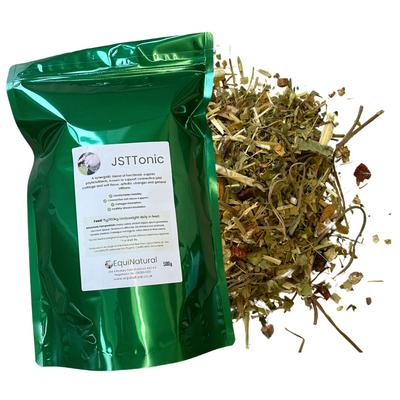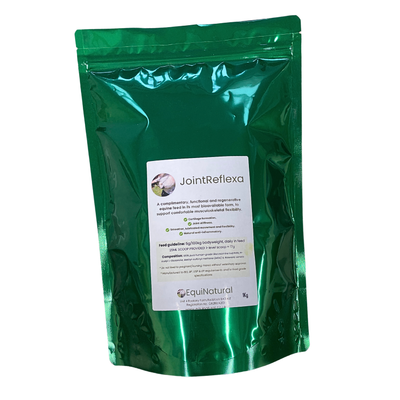ESTABLISHED 2006
Over 50,000 Orders Shipped
NEXT DAY UK DELIVERY
Worldwide Shipping 3-5 Days
SUBSCRIPTIONS
Subscribe & Save!
RATED ★ ★ ★ ★ ★
1100+ 5* Reviews
BOSWELLIA (Boswellia serrata)
Available as either powdered resin or herbal tincture.
Note: This a nutritional, functional food supplement and not veterinary medicine. For more information, refer to Dr Kellon's Horse Sense - Nutrition is not 'Alternative' Therapy
.
Tincture
Our human-grade, certified organic tinctures give you a ready-to-absorb potent source of phytonutrients at the highest-strength available, for immediate absorption straight into the bloodstream and to the body’s cells.
100% certified organic pure tincture: Boswellia serrata Resin, Cold Macerated 1:3 90%, Wild Harvested
- Feed Guide
- Horse - 30-40ml / Pony - 15-20ml, daily in feed.
- Always shake the bottle to disperse any sediment.
- 3-year shelf-life.
Dried Herb
Dried ground resin:
Boswellia serrata Resin 95%, Wild Harvested, Origin Somalia
- Contains 10% boswellic acid
- 5% Silica (mineral) as anti-caking agent
- Feed Guide
- 5g/100kg bodyweight per day, thus for an average 500kg horse add 25g daily to feed.
- 1-year shelf-life.
Functional Nutritional Value
Constituents: Boswellic acid (BA), a pentacyclic triterpene (PT) group containing β-boswellic acid (BBA), 11-keto-β-boswellic acid (KBBA), acetyl-β-boswellic acid (ABBA), and acetyl-11-keto-β-boswellic acid (AKBBA) in B. serrata. Other compounds include the tetracyclic triterpenic acids: e-oxotrucallic acid, 3-hydroxytirucallic acid, and 3-acetoxytirucallic acid.
NB. Our range of botanicals are all grown, harvested and dried without the use of agri-chemicals, non-irradiated and GMO free - see our Quality page for Quality Management & Certification Documents. Laboratory tested for identification and compliance to the British and European Pharmacopoeia standards, and are human grade.
Please be aware that if you're purchasing our dried botanicals for human use, our dried range is cut to appropriate sizes for feeding to horses.
More ...
We all know the biblical story relating to frankincense and the three wise men, but historically, frankincense’s use as an incense was much more than this and far reaching. It was the primary ceremonial resin, it was an offering used in Babylon during the feast of Bel as well as in ancient Persia and Assyria, and the Romans didn't confine their use of this incense to ritual but also used it in the home as well. The burned remnants of the resin were also used by Egyptian women for makeup, who painted their eyelids with various resins mixed with charred frankincense.
The early records of its medicinal use go back to Greece, when is was applied topically for tumours, carcinomas, and oedema, and inhaled for respiratory tract diseases. In Chinese medicine, it's considered to have four main energies - pungent for dispersing, bitter for purging, warm for promoting circulation of qi , and aromatic for moving. They also say that frankincense supports traumatic injury by soothing pain from stagnant blood and qi through increased circulation and removing the blood stagnation, which includes dysmenorrhea symptoms. They also use it for wind-cold dampness appearing as arthritic and rheumatic pain with stagnant blood.
Externally, frankincense is said to reduce swelling, alleviate pain and promote wound healing - I personally get out the frankincense essential oil to rub into aches and pain. Mixed with myrrh it's commonly used as a gum disease mouthwash for pain, redness, and swelling of the gums, mouth and throat. Other uses include stomach and epigastric pain, traumatic pain, carbuncles, sores, swelling, chest and abdominal pain, wind-damp painful obstruction, rigidity, and spasm. Chinese medicine also uses it for enhancing memory and as a fertility promoting agent.
Ayurvedic tradition uses the resin for its anti-inflammatory effects, believed to support rheumatoid arthritis, osteoarthritis, gout, joint pain, skeletal muscle pain, and back pain. They also use it to support the lungs for bronchitis and asthma, and digestion for diarrhea and dysentery. The flowers have also been used for haemorrhoids and the root is said to contain stimulant, tonic, and aphrodisiac properties.
Overall, frankincense/boswellia covers a myriad of body systems:
- When it comes to the nervous system the resin acts as an analgesic, mental tonic, stimulator, cardiotonic, and eye tonic.
- It improves digestion, is an anti-diarrhoerial, a stomachic, carminative, and anthelmintic.
- In the urogenital system it's a diuretic and improves menstruation.
- It's antipyretic and increases perspiration.
- It's antiseptic, wound cleaning, a haemostyptic, supports connective tissue growth, and the essential oil has antifungal properties. In general, this herb is most beneficial to decrease pathologies common for those with Kapha energies.
- It's been studied extensively to show promising outcomes for its use for arthritis, inflammatory bowel disease, gingivitis, diabetes, and cancer.
The list just goes on and on, and rest assured that frankincense/boswellia is here to stay.
Safety
Ground boswellia should not be fed during pregnancy.
The EquiNatural Blog

Menu
Get in Touch
+44 01761 325032
mail@equinatural.co.uk
Unit 4 Rookery Farm, Radstock, BA3 4UL
Terms & Conditions
Privacy Policy
Legal Notice
Stay Connected
Subscribe to our emails for the latest insights, updates, tips, and offers.
Contact us
Thank You for Joining Us!
We’re so pleased to welcome you to the EquiNatural community. Keep an eye on your inbox for updates, tips, and exclusive offers to help your horse thrive naturally.
Warm wishes
The EquiNatural Team
Please try again later
Any information contained within is not intended to replace veterinary or other professional advice.
*
Trading Standards EC Feed Hygiene Regulation (183/2005), Registration No. GB280/4203
* HACCP certified facility (an international standard that ensures we meet food safety standards)
* Registered in England. Company Number 11075894 - Reg'd Office: Unit 10 Rookery Farm, Radstock BA3 4UL
* VAT No. GB 310214964







